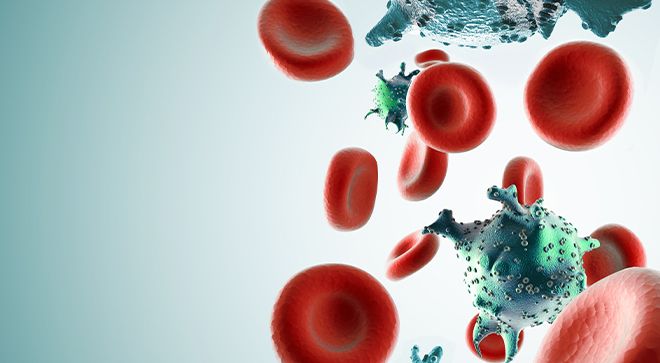News
Article
Adcetris Is a 'Good Treatment' for Patients With Advanced Hodgkin Lymphoma
Author(s):
A lymphoma expert discusses the side effect profile and follow-up data from the ECHELON-1 clinical trial.
The Food and Drug Administration (FDA)’s approval of Adcetris (brentuximab vedotin) in 2018 offered certain patients with Hodgkin lymphoma a new upfront treatment option. The approval was based on findings from the ECHELON-1 study, which consisted of two groups of patients with advanced disease to randomly receive either Adriamycin (doxorubicin), bleomycin, vinblastine and dacarbazine (ABVD) or Adcetris plus AVD.
In an interview with CURE® at the 2019 American Society of Clinical Oncology (ASCO) Annual Meeting, David Straus, a medical oncologist from the lymphoma service at Memorial Sloan Kettering Cancer Center in New York City, discussed follow-up data from the trial.
CURE®: What does the current treatment landscape look like for stage 3 or 4 classical Hodgkin lymphoma?
Straus: For the past 40 years, the treatment has been ABVD, which results in an approximately 70% cure rate for patients with stages 3 and 4 Hodgkin lymphoma. A major problem with this regimen is the toxicity of bleomycin, which causes lung toxicity usually during treatment that can result in delays in treatment, inflammatory pneumonitis and, occasionally but rarely, mortality.
Now there are several new drugs that, as single agents, have approximately twice the activity of any previous conventional chemotherapy agents. One of these is (Adcetris), an antibody-drug conjugate, which is a delivery system that delivers the drug directly to the tumor cells. Because of this, it received accelerated approval by the (FDA) for relapsed and refractory Hodgkin lymphoma and this is a clinical trial incorporating it into the front-line treatment. So, 1,334 patients were randomized to either ABVD or (Adcetris) plus AVD. The primary endpoints are survival, which have not been reached, and the modified progression-free survival at two years. This was reported at the American Society of Hematology (ASH) in December 2017 and concurrently published in the New England Journal of Medicine. At this timepoint of two years, there was a 5% difference in favor of (Adcetris) plus AVD. This was statistically significant and led to approval of (Adcetris) in this combination for this indication.
What does the latest data from the ECHELON-1 study show?
(The poster presented at ASCO) is a three-year follow-up, and relapses usually occur within the first two to three years. There are some relapses that occur after two years, so this really is an interesting endpoint. It’s not the primary endpoint. It’s a subset analysis. We found that the difference between the two regimens continued and increased somewhat. With this analysis, the difference between these two progression-free survival curves is around 7%.
We (also) looked at the subgroups again, and almost all subgroups benefitted from (Adcetris) plus AVD versus ABVD. The other thing that I think is very interesting in this trial, and really is significant for clinical practice, is the observation that interim PET (positron emission tomography scans) did not seem to inform treatment. This is different from many other current trials that use interim PET after two cycles of chemotherapy as a determinant as to whether to continue or whether to change treatment. The majority of patients have a negative PET scan after two cycles of treatment. A negative interim PET scan is very informative and predictive of a good outcome.
The problem is a positive PET scan. We really don’t know what to do with them. We used escalated BEACOPP (bleomycin, etoposide, doxorubicin, cyclophosphamide, vincristine, procarbazine and prednisone) for those patients and the toxicities of that were considerable with a 2% treatment-related mortality in one trial — similar to transplants. The question is, do you have to subject everybody to that on day one? The fact that we did not show that interim PET had any significance, I think really gets rid of this problem for clinicians because you don’t have to do an interim PET, you can just continue with treatment. I think that there are other clinical trials still using interim PET and those are ongoing. Some are using checkpoint inhibitors, which are immune drugs and completely different from chemotherapy, and we will see what happens with them. But I think for now (Adcetris) plus AVD is a good treatment.
How does Adcetris fare regarding side effects?
As for toxicities, (Adcetris) plus AVD gets rid of bleomycin, so it gets rid of those risks. There is more febrile neutropenia, it’s more myelosuppressive than ABVD, but with growth factor support, the febrile neutropenia rate is about 10% which is about the same as R-CHOP [Rituxan (rituximab), cyclophosphamide, doxorubicin hydrochloride, Oncovin (vincristine sulfate) and prednisone] — (the treatment) used routinely for diffuse large B-cell lymphoma and other non-Hodgkin lymphomas. So, I think that is acceptable.
A major toxicity problem is sensory peripheral neuropathy. There was a higher incidence of that in the (Adcetris) plus AVD arm of the trial. In both arms, there was either improvement or disappearance of this with time, and at three years about 17% of patients still had residual grade 1 or grade 2 peripheral neuropathy versus 5% or so for ABVD.
Are there any next steps?
There are trials ongoing for using this agent in earlier stages of Hodgkin lymphoma. It’s not approved for stages 1 and 2. There are trials that are being planned to look at it. The US Intergroup plans to have a trial comparing (Adcetris) plus AVD versus the checkpoint inhibitor (Opdivo [nivolumab]) plus AVD in a randomized prospective clinical trial to see if the checkpoint inhibitors are the same, better than or worse than (Adcetris) with the AVD combination.





